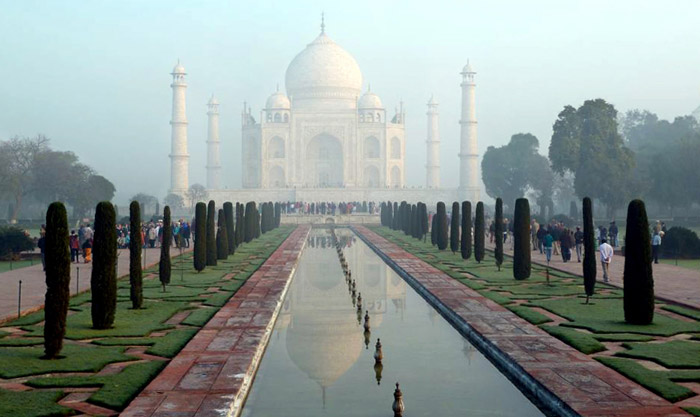
© 2011 Rick Clark. All rights reserved.
How impossible it can feel to truly photograph the Taj Mahal–to improve on the trillion shots taken by everyone else with a point and shoot camera!
The most beautiful building in the world seems to resist photographic interpretation. What more can a camera make of it but what it already is? How could this aspiring photographer, art creationist, image-poet, perspective-shifter, possibility-exploring light-mad clicker of shutters accomplish beyond the photographic norm?
Once I’d stepped through the massive center gate through which the millions of tourists and camera-wielders a year pass into the domain of the great marble ghost known as the Taj Mahal, I stood long and overwhelmed as many do, speechless and agape despite my relative jadedness at the sight of yet another tourist destination.
I encompassed the great ghostly visage of the edifice in the camera’s viewfinder, squared it in the frame, lined up its reflection upon the pools that stretch before it, and adjusted for the hazy light, but once I began to move the camera closer to this perfectly designed, aesthetically balanced mountain of white marble, photographing it in new and interesting ways was feeling like a futile exercise in shutter clicking.
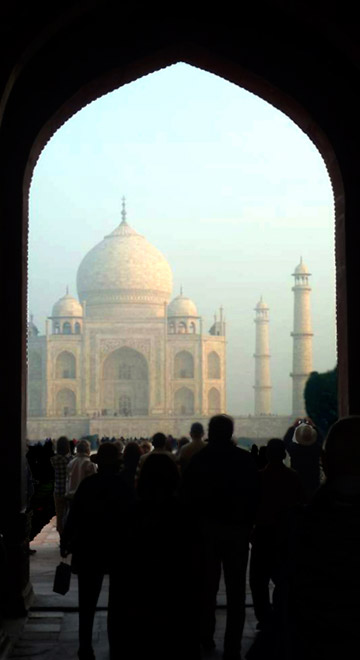
© 2011 Rick Clark. All rights reserved.
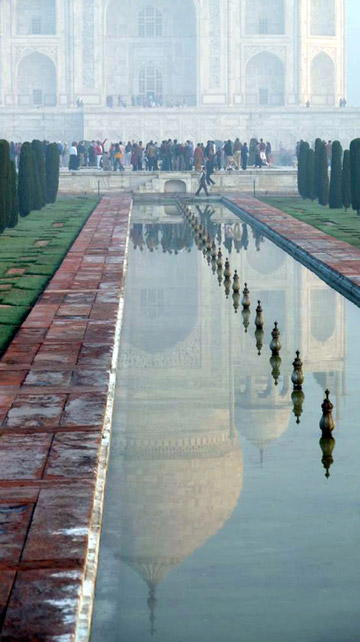
© 2011 Rick Clark. All rights reserved.
As I began to observe my surroundings, it appeared that for the majority, the Taj Mahal, the most visited wonder of the world, was merely the object in the photo’s background before which the tourist had traveled thousands of miles to photograph family, spouse, friend, or lover in order to share the pictures back home and show they were there. It was the fulfillment of a dream inherited from fellow tourists, postcards, magazines, and especially photographs. I was trying to catch something beyond the personal—something essential that other cameras missed, only to fail miserably.
Put the camera back in its case!
Having lost my wife and tour group, I drifted forward with the masses, burdened with the ambiguity of wanting the whole blesséd image to myself yet knowing that the thousands of people sharing it that day were somehow an important facet of the photographic experience. I would capture the viewers and the viewing along with the view.
Oddly, the reflection pools are not wide enough to encompass the whole of the building itself—purposefully, I’m sure! Add to that the fact that straight-on shots grow tiresome and that the professionals taking photos of tourist groups and couples here and there were making a point of shooting at a slight angle, I quickly began to flail about for some other way to capture this Mogul magnificence with my light-capturing bits and bytes.
Then, as frequently happens when I find myself with lots of time with an inspiring subject, I was drawn to the shadow side, the western terrace in this case, which required that either I cover my shoes with the thin slippers provided by the city or I check them in to be stored in a shoe box. I was happy to go barefoot on the endless stretches of red, white, and blue stone, to feel the cold hardness of the subject I was exploring upon the soles of my body. My question was this: How could I place the ever-higher, ever-stronger morning sun behind a tower or dome so as to create aesthetic compositions of silhouettes and even allow a glint at a critical edge or in a suggestive corner where one stone facet meets another?
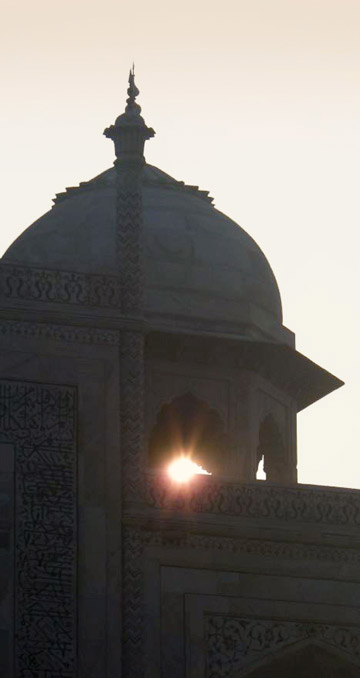
© 2011 Rick Clark. All rights reserved.
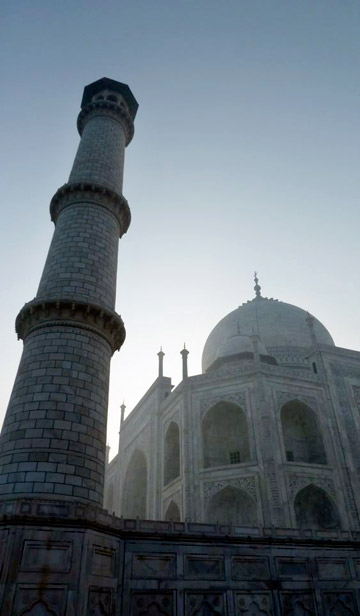
© 2011 Rick Clark. All rights reserved.
Thus I lost myself in following my eye towhatever pleasing close-up, expanse of structural surface, in-laid flowers and Koranic scripture, or angle it darted, with my viewfinder. I adjusted my bodily position and zoom lens and therefore the intensity of sunlight pouring up over the straight lines and curved, into the sky above, which ranged from a diffused pale yellow to a light-struck midnight blue. Ironically, now, the building known first for its moonlight whiteness was cast in dusky blue shadow. I was pleased with my little discovery.
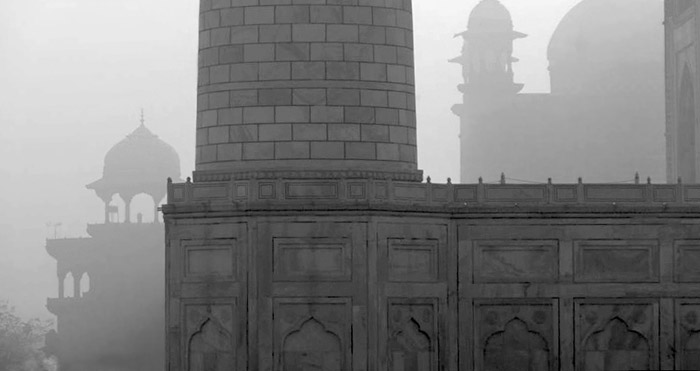
© 2011 Rick Clark. All rights reserved.
I looked about me and, sure enough, there were a couple people taking pictures from the same general direction, but so few by comparison to the many who milled about directly beneath or far out in front of the Taj, either side of or beyond the reflecting pools, that I felt that these few fellow photographers must have been on the same photographic journey as I. We were photographic soul-mates in passing, capturing incredible details that others may not have taken the time to truly appreciate.
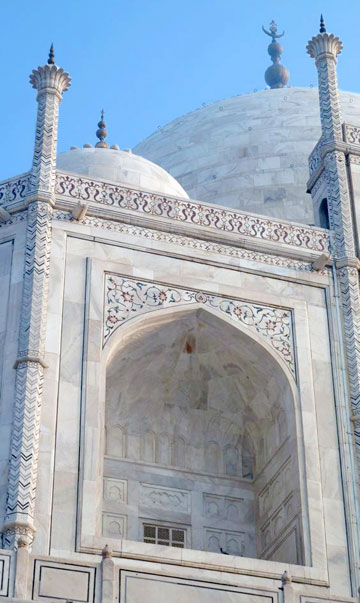
© 2011 Rick Clark. All rights reserved.
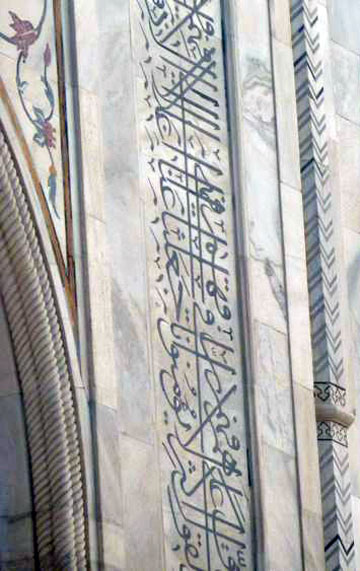
© 2011 Rick Clark. All rights reserved.
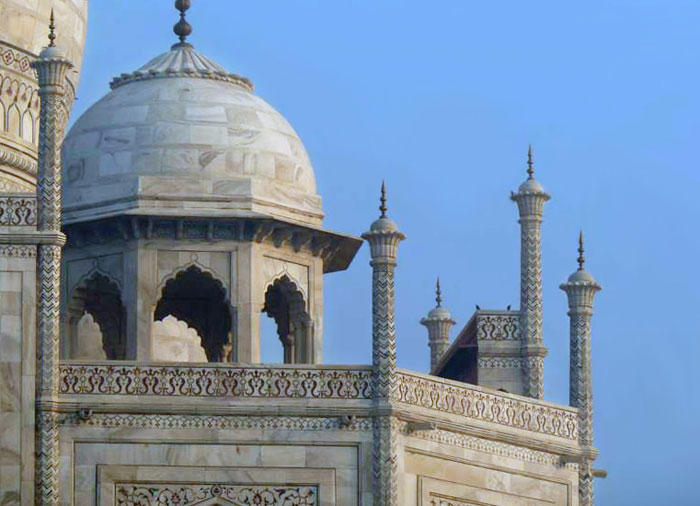
© 2011 Rick Clark. All rights reserved.
Strangely, once I’d exhausted the possibilities as I knew them and as determined by the capabilities of my camera, I found a last few possibilities for shots behind the edifice, above the river, where I combined the perspective of the long tall rear wall with silhouettes of the domes and towers of the east gate beyond. The last shot I took is of a pale wooden door coved, in mosque style, in the endless white marble, a seemingly insignificant detail in the mass of beauty that is the Taj. It occurred to me that detail wasn’t always as important to the conceiver, architect Ustad Ahmad Lahauri, as was the first grand, mystical, but distant impression.
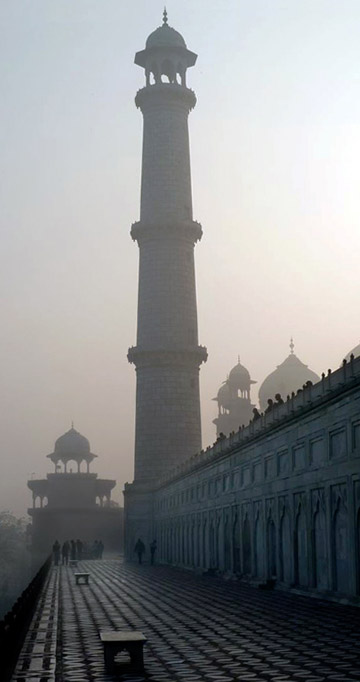
© 2011 Rick Clark. All rights reserved.
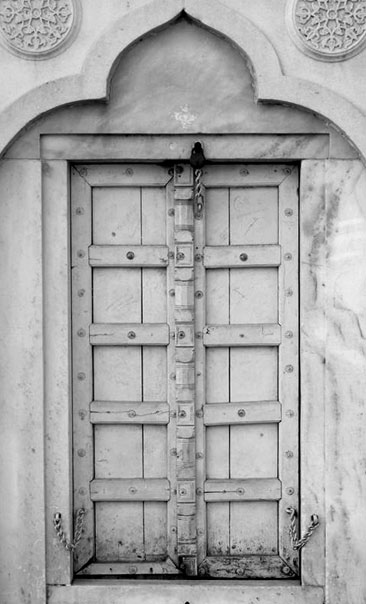
© 2011 Rick Clark. All rights reserved.
Then and only then did I put my camera away and abandon myself to the strictly flesh experience of the exquisite Taj Mahal, which, by the way, is not so much an expression of romantic love as it is Shah Jahan’s marking of the loss of his beloved wife and their child. It is not a palace of love, but a mausoleum, which he had built with white marble and not red sandstone—of which so many of the forts and palaces of the ancient Mogul empire were built—because he wanted to preserve an image of spiritual purity and not one of blood, as his wife died of a rupture during childbirth. Knowing this, then, I felt poetic justice in seeing and striving to shoot, beyond the expansive whiteness of the Taj, the blue bruise of deep shadow.
by Rick Clark

Leave a Reply